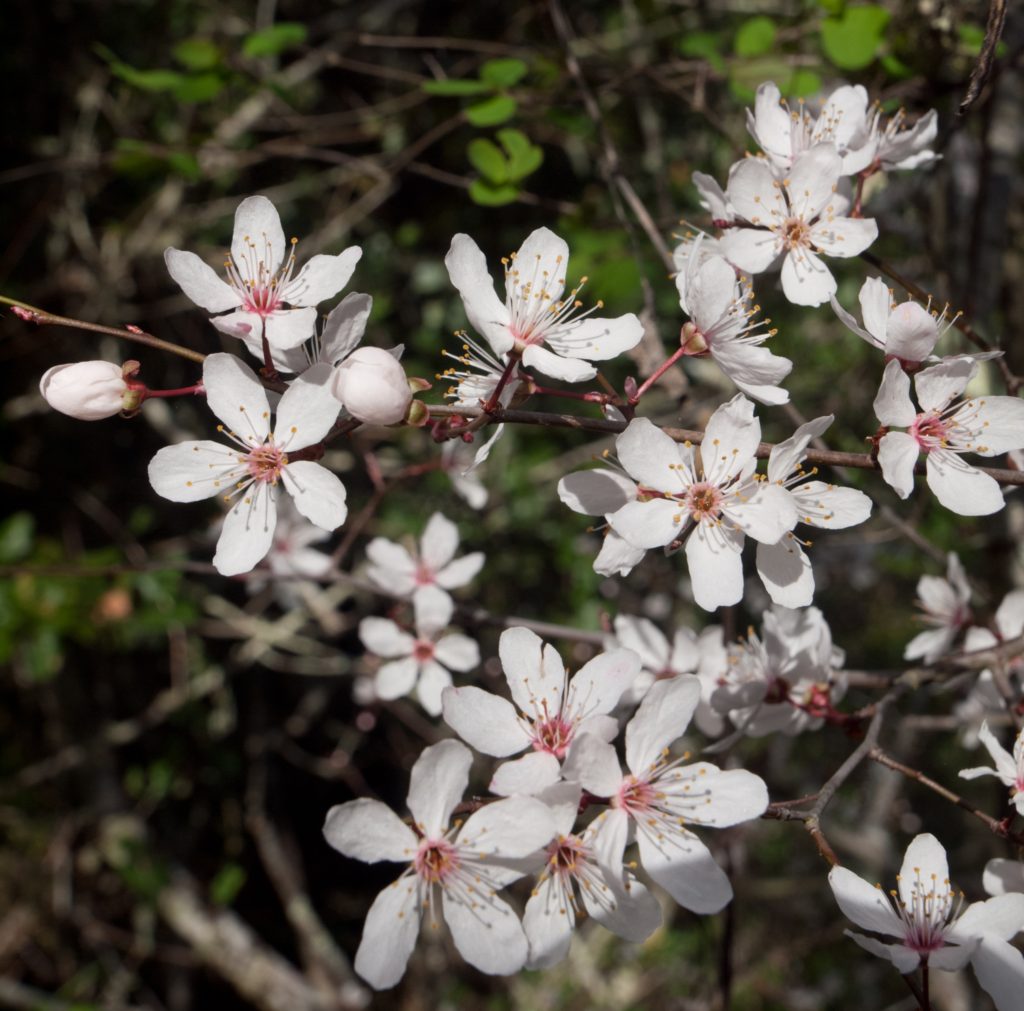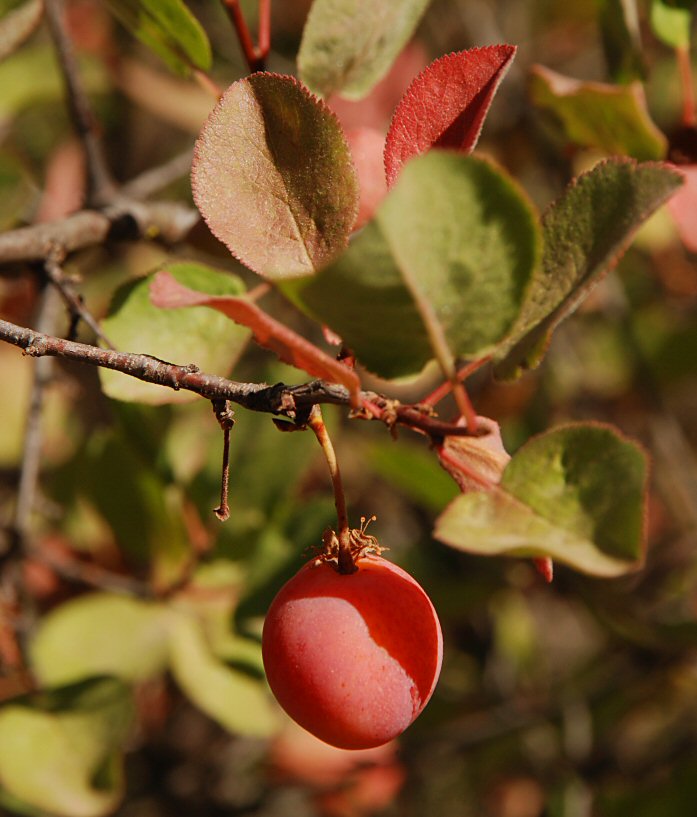Do You Know About This Wild, Native Fruit?
There’s a wild fruit tree around here. It’s one of the earliest trees to bloom, usually starting in mid-February, and it’s a cheerful harbinger of spring.
It grows in the more open, wild areas and not in an orchard. And it helps our wildlife.
What is this tree and how will I know it?
This tree is a wild and native plum tree called Sierra Plum (Prunus subcordata), but it also goes by the names Klamath Plum, Pacific Plum, or Oregon Plum.
You’ll know it because of its early bloom, white plum-type flowers sometimes with pink tinges. The bark is a dark gray. In June you’ll see its small plums. And you can eat them.
What’s so interesting about it?

The early bloom acts like a harbinger of spring, and serves the pollinators on the days that feel like spring. Like this past February when no rain came and warm, sunny weather prevailed.
It blooms around the time the Manzanita blooms start, offering pollen and nectar for the bees and butterflies that are out early. The springtime foliage is eaten by up to 159 species of butterflies and moths—supporting them in becoming essential food for birds and hosting more of the pollinators we need. The fruits are good for the birds.
Its showy fall foliage is yellow to a scarlet red.
What is the fruit like?
The fruits are tiny plums with colors that vary from yellow to orange, to red, and on to a dark purple-red. Each tree has its own fruit color. I was once lucky enough to have lived by a patch of plum trees that had all the colors in the patch. I tasted them all. Some are sweeter than others, and sometimes they just need to sit on the tree longer to develop their sweetness.
They’re small plums with large seeds, so they’re not real meaty, but they make a fun out-of-hand snack. They start ripening in June and continue over a long period.
What can we do with the fruit?
Aside from fresh eating, I have seen people use them in great ways. One friend used them to make fruit leather by mashing the fruit, removing the pits, and spreading out to dry in a food dehydrator.
Another made very tasty jam with them, and some batches were mixed with locally grown mulberries, again, very tasty!
And another friend submerged them in a big jar of vodka and let them sit for 5 years, yielding a sweet, tasty drink. You can use 100 proof vodka for best extraction. But it’s harder to find and 80 proof does well, too. But upon researching, I’ve found that it’s not necessary to leave it for five years, 3-5 days seems to be adequate according to online recipes. It is safe, the alcohol prevents mold and bacteria, like botulism, from growing. You can strain the fruit out and store indefinitely. Just get the fruit submerged. I’ll confess, I’ve left fruit in vodka for years, and in brandy. And it’s still good.
The infused vodka can be mixed into cocktails or add some simple syrup for a sweet liqueur.
A family I knew would take their kids and a bunch of buckets and gather up as many as they could to feed to their pigs!
Would I want to plant it? And where would I get it?
The Sierra Plum gets up to 25 ft. tall with an upright form. Being a plum, it can handle some pruning to shape and size it. Las Palitas Nursery, a native plant nursery in Las Palitas, suggests that this would be a nice small tree to plant next to a bird bath, or as a screen between you and the neighbor, and especially nice in a mixed hedge with Toyon and Coffeeberry. That would be a great combination for pollinators and birds!
With our need for more native plants in our landscapes to help the pollinators and birds, all so essential for the ecosystem services they render, they’re really worth a try!
Put them in a less tended part of the yard, they won’t need much water, maybe just a couple of deep soakings through the summer.
They’ll support native bees, butterflies, and birds, and you!
The plant can be purchased from Villager Nursery in Truckee.
We’re in between the flowering time and the fruiting time of the Sierra Plum. So start looking for the fruits in June.
I currently see a bloom on wild cherry trees which are not native and I believe are feral trees from human or bird-dropped seeds and fruits. Unfortunately, I never find the fruits on these. I can tell they’re cherries because of the long stems on the flowers that allow the flower to droop downward, they’re in clusters, the bark is smooth gray with horizontal striations, and the foliage is cherry.
Since Sierra Plum is not flowering or fruiting at this time, but you can to refer back to this article later. See more on why planting native plants is so important in this article.
Photo Credits:
Fruit: Barry Breckling
Flowers: Franco Folini

